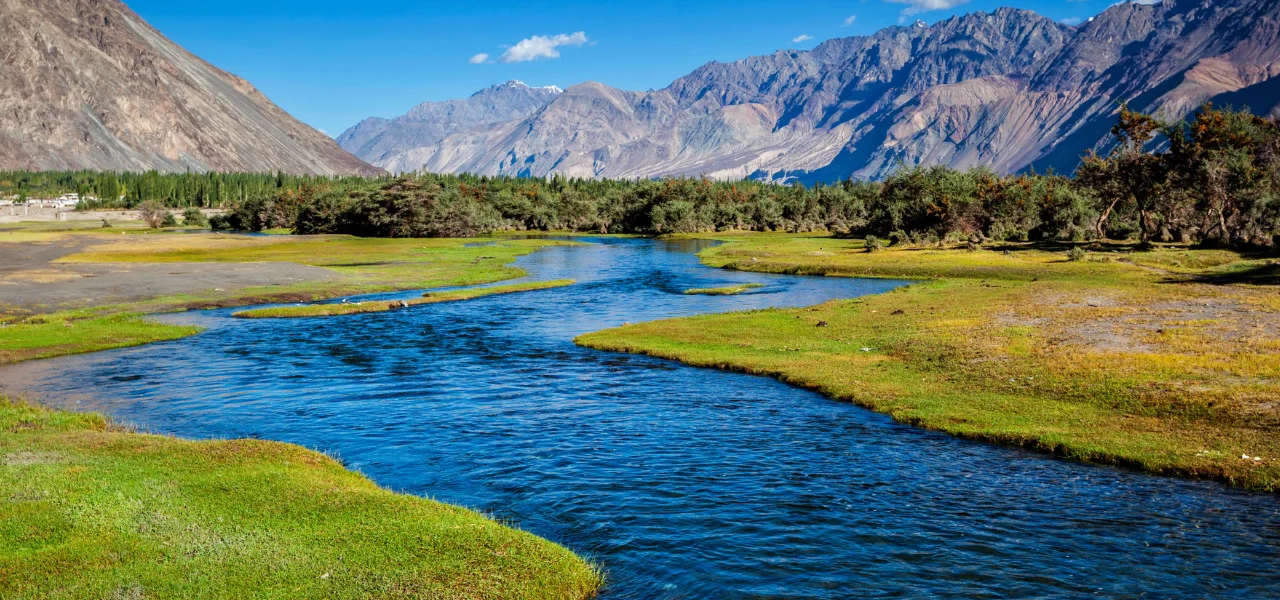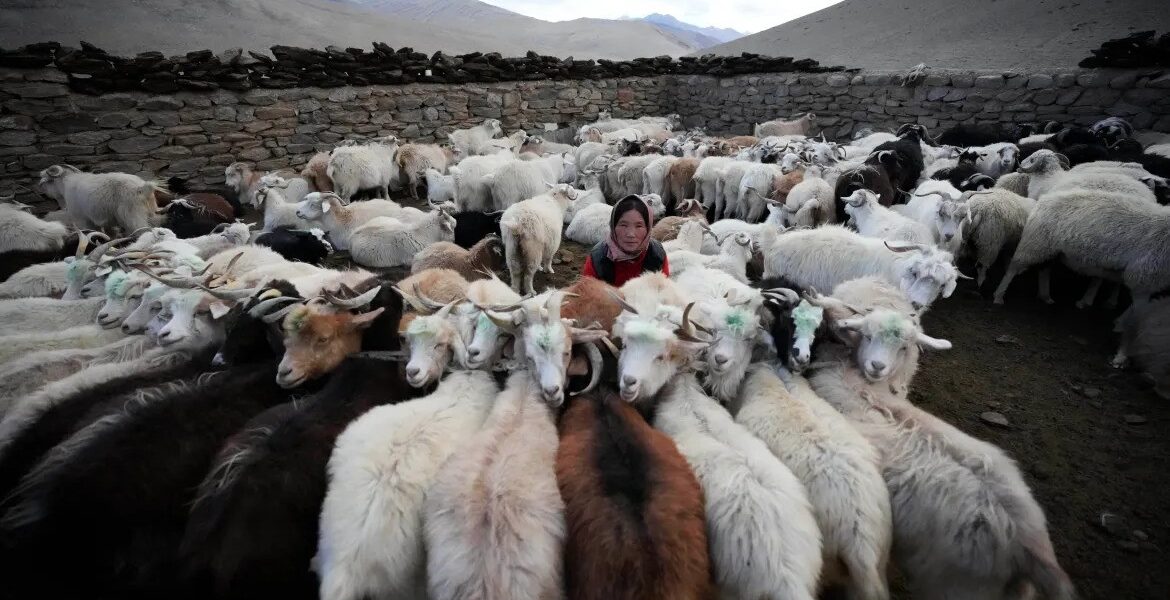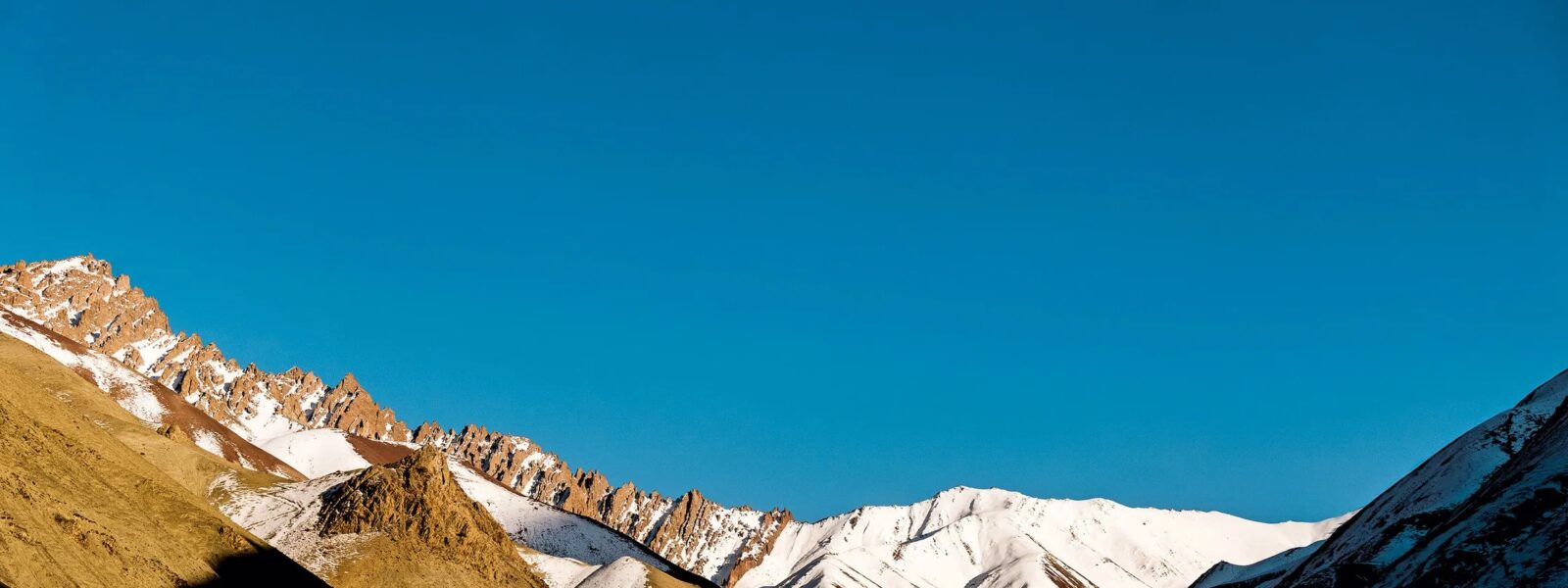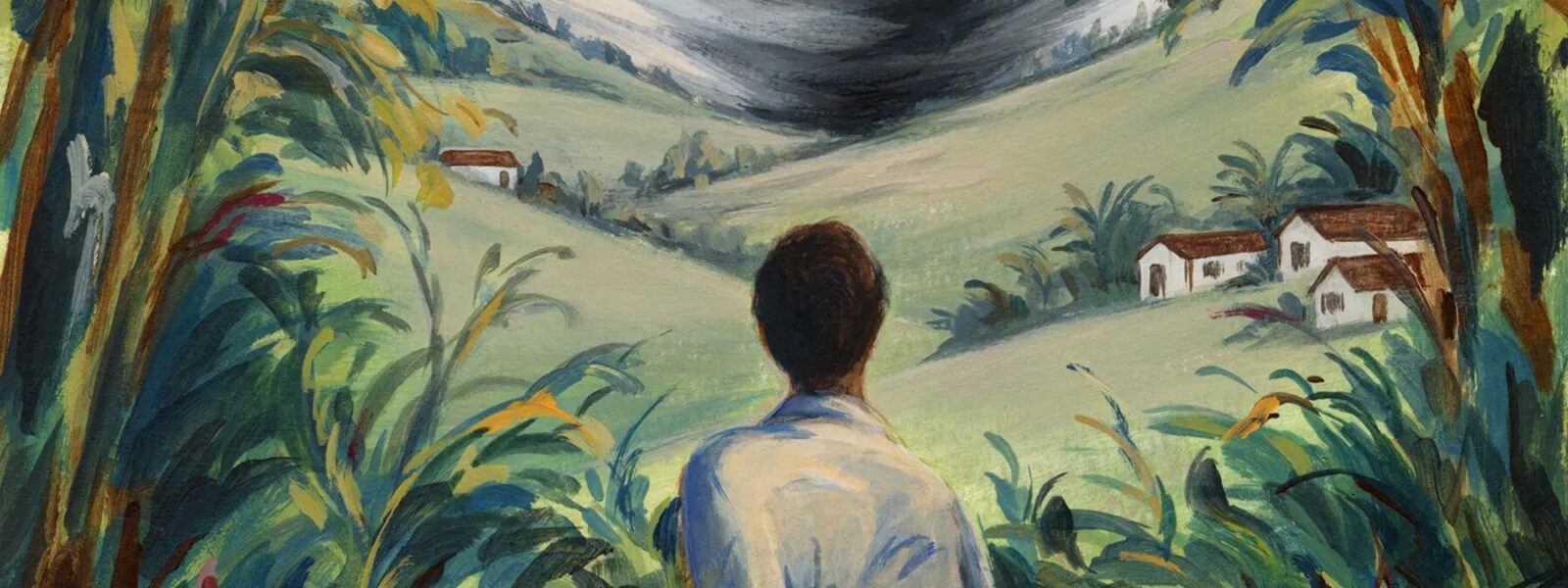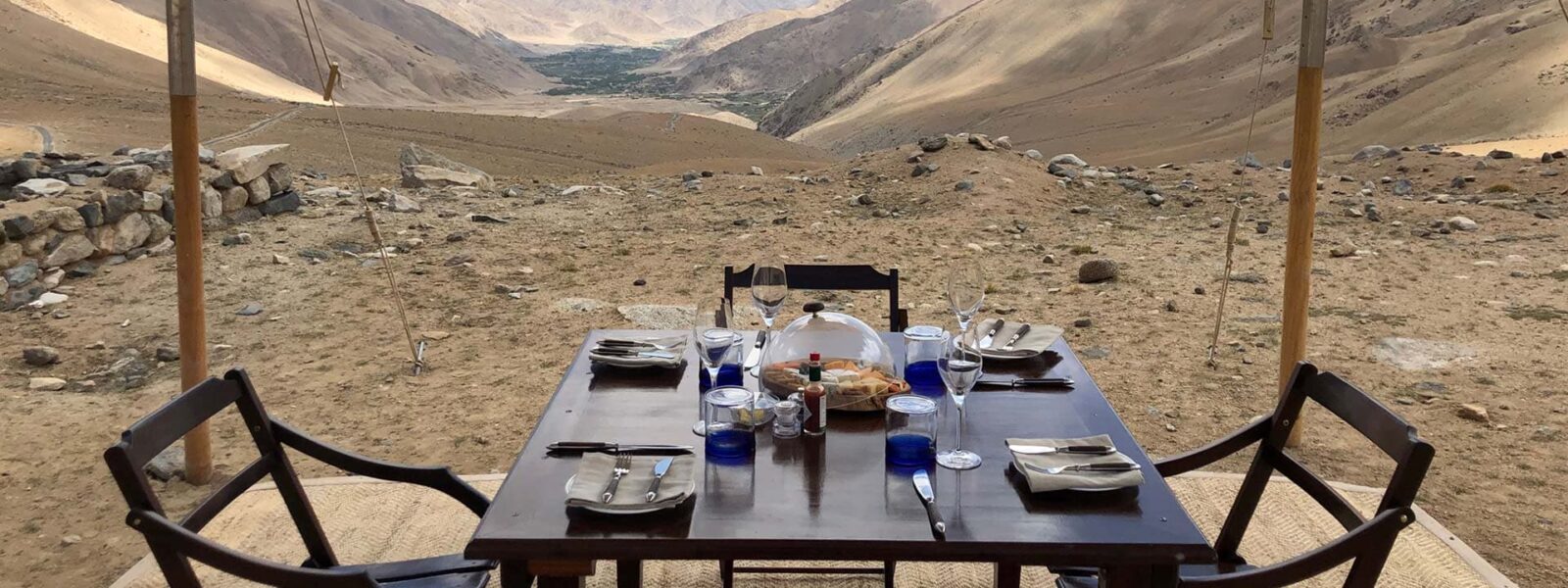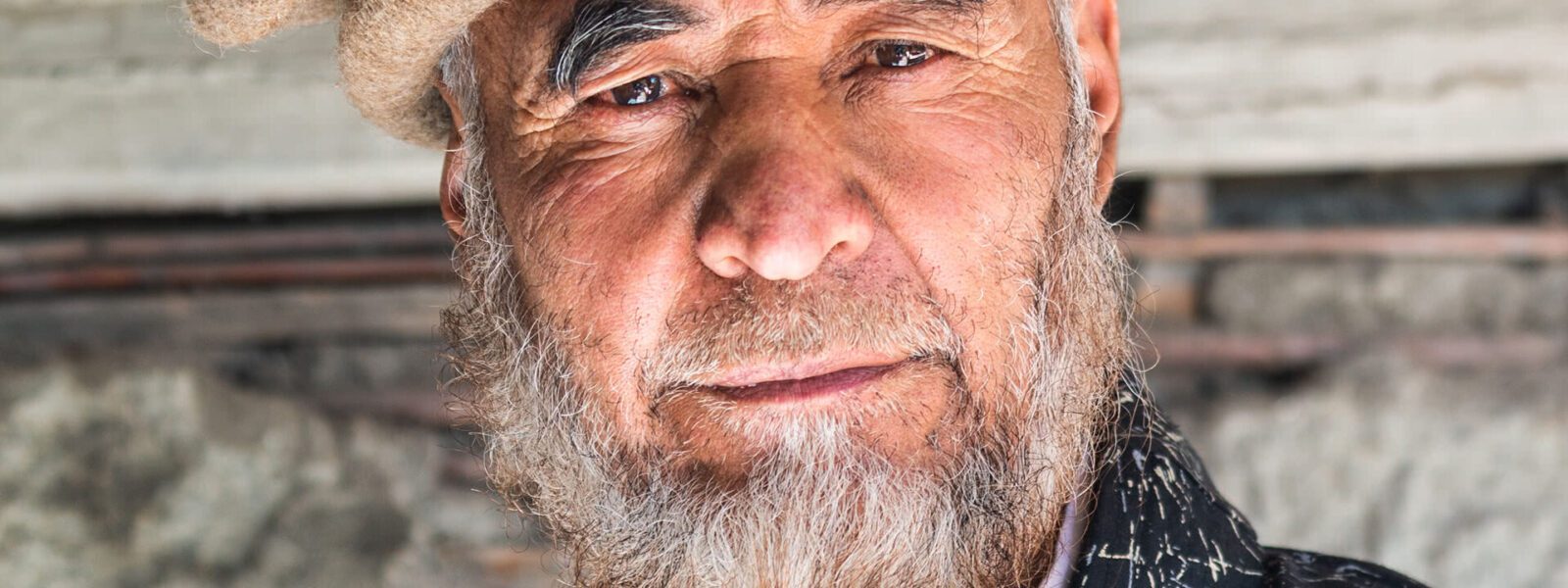Where Silence Paints the Soul
It begins with the sky. Not the kind you glance at between buildings or framed in a café window, but a sky so wide, so startlingly close, that it seems to breathe with you. In Ladakh, even the air feels different—thinner, yes, but also clearer, as if it has shed the noise of the world. For many travelers arriving from Europe, this moment—the first lungful of Leh’s mountain air—marks not just a new destination, but a quiet threshold into another state of being.
Wanderers from Berlin, Florence, Marseille, and Ljubljana don’t come to Ladakh for luxury. They come because the world they’ve left behind feels too loud, too fast, too hollow. What they find here is not silence in the absence of sound, but a landscape that speaks in stillness. In this place of high passes and hidden valleys, the idea of time itself slows, and the rhythm of life begins to align with something older, deeper, almost forgotten.
The journey is never accidental. It’s a deliberate veer off the beaten path. Many of Europe’s modern-day bohemians—those who paint, write, perform, or simply seek—speak of Ladakh as if it had called to them. And when they arrive, it rarely disappoints. There is a kind of magic in waking to the soft clang of prayer bells in the wind, in walking through monasteries that smell of butter lamps and old stone, in being anonymous in a place that feels sacred.
“I wasn’t sure what I was looking for until I stopped looking,” a traveler from Vienna once told me over salt tea. “And here, in this emptiness, I found clarity.”
The power of Ladakh is not just in its rugged beauty or its Buddhist serenity. It’s in how it strips away expectation. Here, you are not a tourist; you are a guest of the mountains. The streets of Leh, with their slow smiles and timeless pace, make no promises. They simply ask you to stay present. To walk slowly. To listen more than you speak.
Ladakh offers something rare in the modern world: the permission to be still. And for those who carry the weight of creative yearning or quiet rebellion, that stillness is not empty—it is a canvas. A beginning. The soul inhales here, deeply.
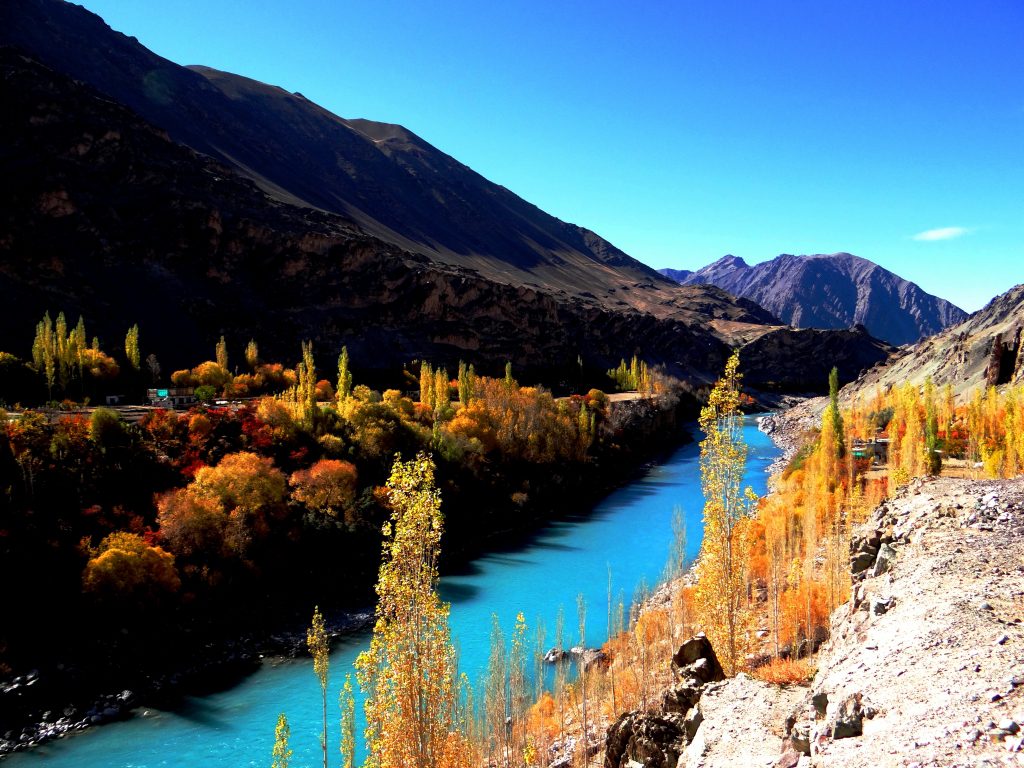
Following the Modern-Day Hippie Trail
Long before the internet mapped every hidden corner of the earth, there was a path known only to those guided by instinct, rebellion, and word-of-mouth. It was called the Hippie Trail—a loose ribbon of road stretching from Western Europe through Istanbul, Tehran, Kabul, and finally, to the roof of the world: Ladakh. It was not a path for tourists, but for seekers. For those chasing not monuments, but meaning.
That trail, in its original form, is gone. Borders have closed, cultures have changed. But in Ladakh, the spirit of that pilgrimage lives on. You feel it in the cafés of Changspa Road, where faded murals speak of Shiva and stars. In the courtyard of Leh’s old guesthouses, where a Spanish guitarist strums beside a Ladakhi auntie hanging apricots to dry. And in the journals of travelers who, even today, sketch their thoughts between cups of butter tea and stories shared by candlelight.
Europe’s modern bohemians still come—some knowingly following footsteps, others simply pulled by the same quiet magnetism. What they find is not nostalgia, but evolution. The handmade signs may now point toward Wi-Fi, but the energy is unchanged. There’s an unspoken agreement among travelers here: we are not here to impress, but to unravel. To strip away the clutter of our lives back home and sit with what’s left.
Alongside Ladakh’s sacred peaks, you’ll find Berliners on bicycles, Parisians writing poetry at altitude, and Copenhagen’s painters searching for light only found above 3,000 meters. Many have left behind careers, apartments, expectations. Some are on gap years, others on life sabbaticals. But all are here because Ladakh still offers something Europe once did: room to breathe, space to question, freedom to just be.
The trail has changed, but the hunger hasn’t. Ladakh continues to whisper the same invitation it always has—come as you are, leave what you’re not. And for those tracing the new Hippie Trail, this place remains a spiritual checkpoint, a mirror, a gentle provocation to live more consciously.
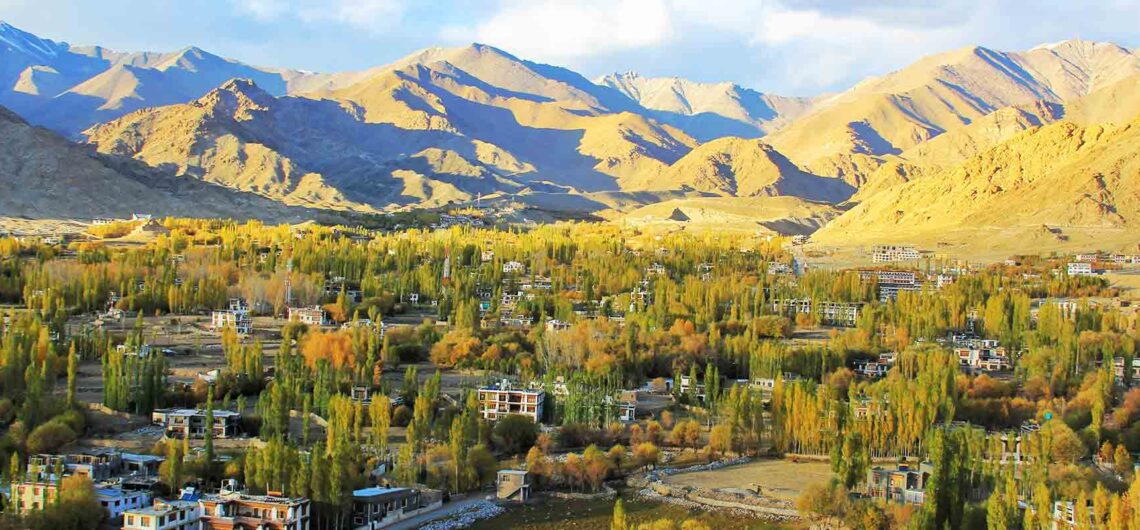
Homestays and Nomadic Kindness
There are no nameplates on the doors, no digital locks, no room numbers glowing in neon. Just a wooden gate, a slow-creaking hinge, and the kind of welcome that comes with two hands pressed together and a warm smile that doesn’t need translation. In Ladakh, staying in a homestay is not simply about accommodation—it’s about becoming part of a rhythm that has flowed through these mountains for centuries.
European travelers, especially those weary of polished hotels and generic experiences, find something deeply nourishing here. To sit cross-legged on a kitchen floor in a village like Rumbak or Turtuk, to help stir the thukpa over a clay stove, to share silence with a host who speaks no English yet understands exactly what you need—this is slow travel in its truest form.
Homestays in Ladakh are acts of quiet hospitality, rooted in kindness and simplicity. The walls are often made of mud brick; the blankets are heavy with stories. You may wake to the sound of yaks passing outside or the rhythmic churning of butter tea. No itinerary, no five-star reviews—just a family inviting you, a stranger, into their everyday.
These homes are more than shelters—they are living philosophies. Many operate with solar energy, use traditional compost toilets, and grow their food in high-altitude gardens that defy gravity and frost. Eco-conscious living is not a marketing term here—it is survival, it is wisdom, it is culture. And for European visitors from cities like Amsterdam, Vienna, or Milan, there’s something deeply moving about participating in this lifestyle, even briefly.
It’s not uncommon for travelers to stay longer than planned. One night becomes three. A shared dinner becomes a shared story. Some return the next year. Some never leave. What begins as a lodging choice slowly transforms into something more: a relationship, a home away from noise, a reintroduction to community.
In a world increasingly obsessed with speed, Ladakh’s homestays remind us that depth comes from slowing down. That being welcomed into someone’s home, not as a guest but as a fellow human, is one of the most beautiful experiences travel can offer. And perhaps, that’s what the European bohemians have always known: in the heart of Ladakh, kindness still travels on foot and arrives at the kitchen door.

Where the Soul Takes Shelter
Some places speak softly. Ladakh does not speak at all—it listens. It waits. And in that sacred quiet, it invites you to do the same. For many travelers from Europe—those who have wandered far not for adventure, but for understanding—Ladakh is not a destination, but a refuge.
At sunrise, the light spills slowly across the courtyard of Hemis Monastery. Monks, draped in crimson, move like shadows across stone steps worn smooth by centuries. Somewhere a conch sounds, echoing off the mountains. You are a visitor, yes—but also a witness. The moment asks nothing of you but presence.
This is spiritual tourism in its most humble, most authentic form. There are no glossy brochures promising enlightenment. No curated enlightenment retreats with imported incense. What exists here is far older than wellness fads—it is a living tradition rooted in breath, in ritual, in stillness.
Many who come to Ladakh from Paris, Oslo, or Prague arrive carrying something invisible—a restlessness, a sorrow, a yearning they cannot name. And here, without distraction, they find space to lay it down. Not to solve it. Not to escape it. But to sit with it, under prayer flags that flutter like whispered prayers.
In the village of Alchi, beneath thousand-year-old murals of bodhisattvas, you might find a Swedish traveler tracing the lines of a fresco with her eyes, tears unspoken. Or at Thiksey, a Dutch musician sitting in meditation beside a novice monk, neither speaking, both still. In Ladakh, people do not come to talk. They come to feel.
There are silent retreats nestled in the mountains, some lasting days, some weeks. Others find mindfulness in movement—walking pilgrimages through sacred valleys, or simply sitting beside the Indus River as it tells ancient stories to those patient enough to hear.
What Ladakh offers is not answers, but questions that breathe. Questions that unfold slowly, like the petals of a high-altitude flower blooming only when the air is cold enough, the silence deep enough.
For Europe’s bohemians, for those drawn to the edge of the map, this is the real destination: not a peak to climb, but a pause to enter. And here, where the Himalayas rise like prayers, the soul finally finds a place to rest—not because it is finished, but because it has been heard.
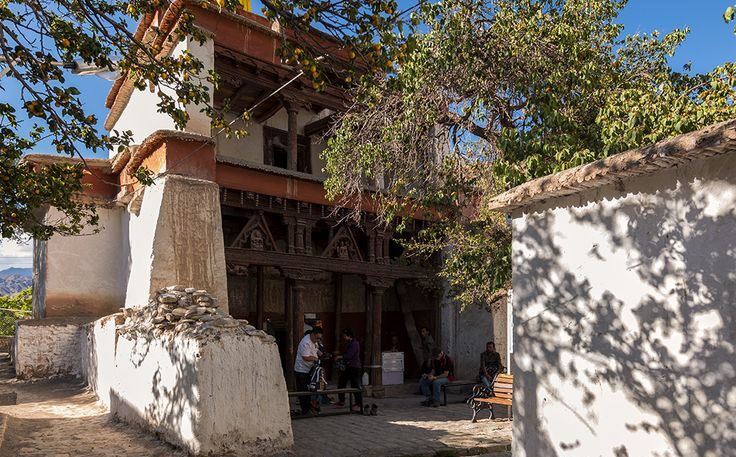
Landscapes that Rewrite the Heart
There are places where the land doesn’t just impress—it rearranges you. Ladakh is one of those rare places. Here, the silence is not absence, but presence. It stretches between the peaks, flows through the gorges, and settles into the bones of those who wander its trails. For many Europeans, arriving in Ladakh is not a journey into nature, but into the self.
Zanskar. Nubra. Changthang. These are not names from guidebooks—they are living, breathing geographies of awe. To drive through these valleys is to surrender to vastness. The road to Pangong Lake, with its hairpin turns and lunar landscapes, doesn’t ask you to photograph it—it demands you stop, breathe, and simply witness.
European travelers often describe Ladakh’s terrain not just as beautiful, but as honest. It does not try to charm you. It does not smooth its edges for your comfort. The cold bites. The sun scorches. The wind howls without apology. And yet, it is precisely in this rawness that many find relief—from the over-curated experiences of Western travel, from the digital fatigue, from the constant hum of performance.
You might meet a Belgian hiker who hasn’t checked his phone in a week, only his heartbeat. Or a Portuguese couple who came for a trek and ended up staying for the quiet. Here, the landscape is not a backdrop—it is a teacher. It shows you what you cling to, what you carry, what you can finally put down.
Every curve of the trail reveals something new: a herd of blue sheep darting across a ridge, an old stone mani wall covered in sacred script, a solitary chorten glowing gold at sunset. These are not touristic highlights—they are moments of wordless clarity. And in such moments, a transformation begins.
This is why so many Europeans return home from Ladakh not simply changed, but redefined. The mountains don’t preach. The rivers don’t instruct. But everything here, from the colors of the sky to the crack of earth underfoot, becomes a mirror. A call inward. A rewriting not of what you see—but of how you see.
In the end, the most lasting images are not the photographs, but the internal stillness that remains long after the journey ends. A quiet knowing. A softened gaze. A heart, rewritten by the land itself.
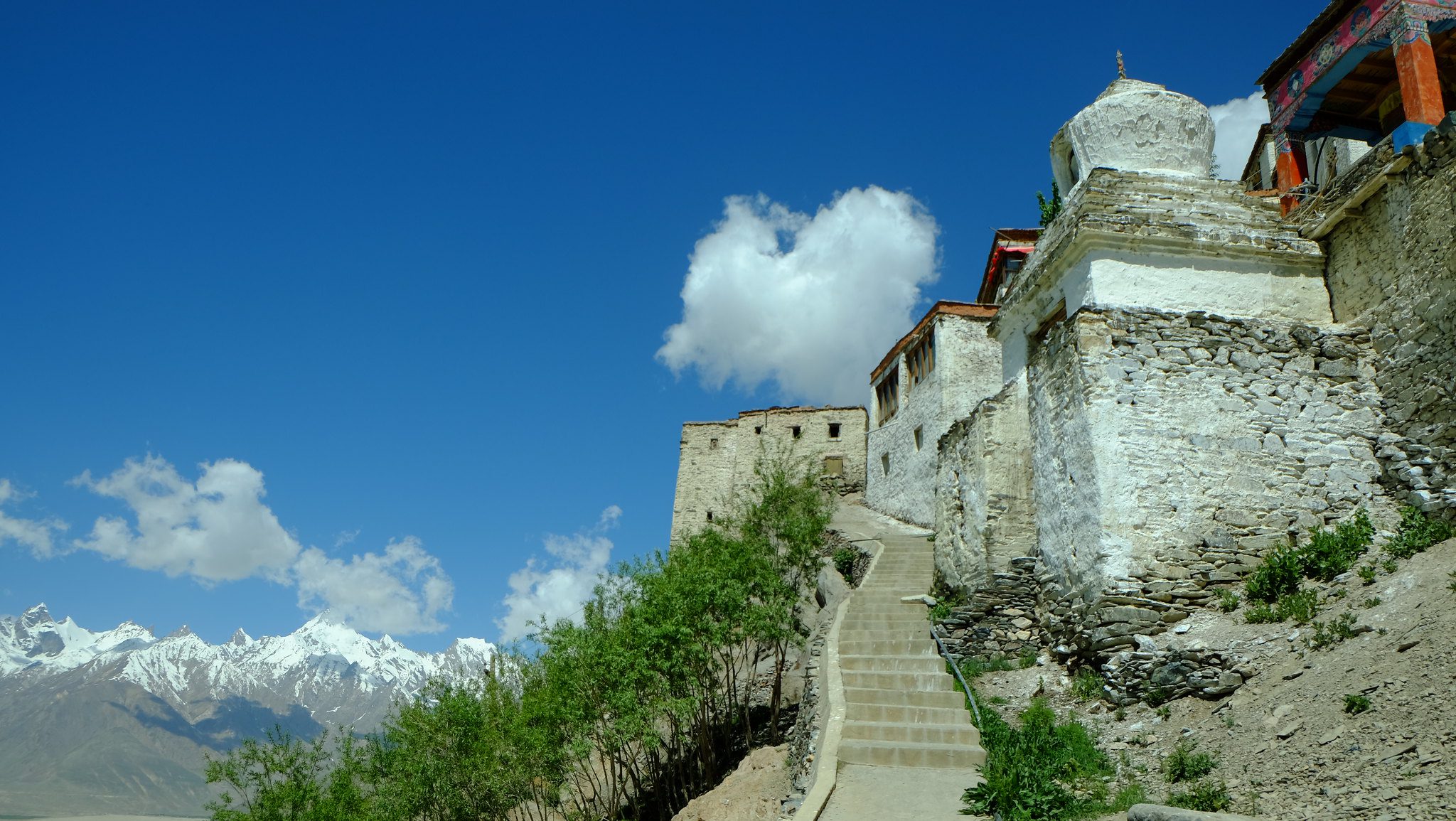
Creativity in Thin Air
There’s something about the altitude. Maybe it’s the way the air thins out the distractions, or how the light pours in with a clarity rare in the world below. But up here in Ladakh, creativity doesn’t just return—it blooms. For many European artists, this high desert is more than a location. It is a muse, a sanctuary, a palette stripped to the elemental.
In Leh, the cafés are filled not with influencers chasing likes, but with sketchbooks opened between bites of apricot cake. You’ll hear conversations about shadow and silence, about the symbolism of stupas, about how the ochres of Lamayuru shift with the wind. A Slovenian dancer might be practicing barefoot in the courtyard of an old monastery. A Norwegian composer might be recording the sound of wind chimes blending with chanting monks. A French novelist might sit for hours, writing one sentence.
Ladakh doesn’t inspire in a loud way—it seduces gently, with space. The kind of space that creative minds long for in cities where rent rises faster than imagination. It gives permission to pause, to observe, to let thoughts unfurl like the long silk of prayer flags drifting in alpine wind.
There are artistic retreats here, yes—but most creativity happens outside of structured programs. It takes place in silence, in stillness, in the echo of footsteps on mountain paths. Some travelers bring their materials with them—paints, lenses, journals. Others find their medium in the very moment. A British photographer once told me she came to document Ladakh, but instead, Ladakh ended up documenting her.
What Ladakh offers to the European creative is not inspiration, but disarmament. It strips away ambition, self-doubt, and digital noise, until only the essential remains. And from that quiet ground, the real work begins.
In villages like Hemis Shukpachan or Disket, the raw textures of daily life—spinning prayer wheels, carved mani stones, goats balancing on impossible slopes—become metaphors, motifs, meditations. Every corner becomes a canvas. Every encounter a story.
Ladakh is not for everyone. But for those who live by the rhythm of beauty and question, for those who wake in the night to write something they almost dreamed, this place offers a rare kind of creative oxygen. Not the kind you breathe with lungs, but with your soul.
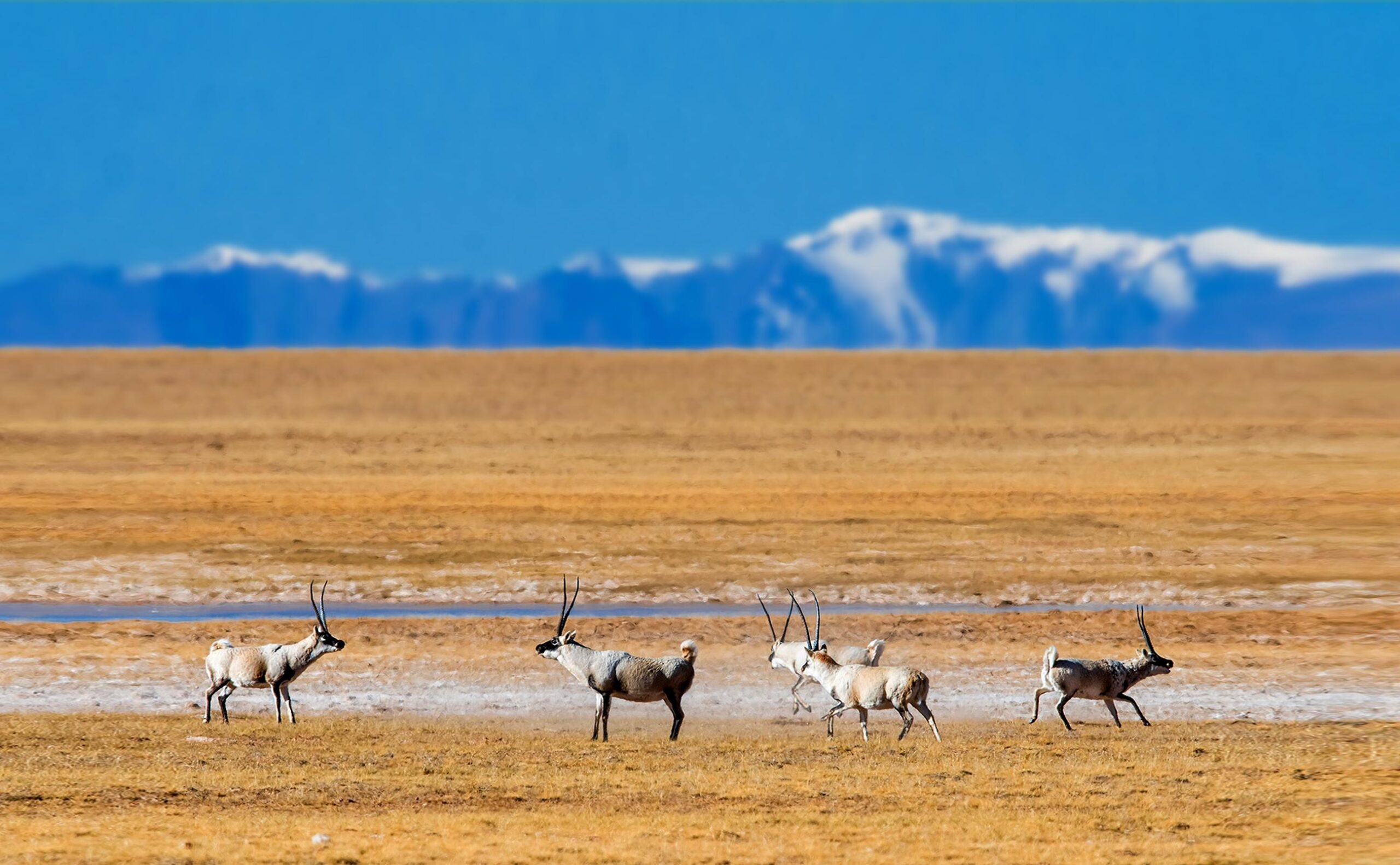
The New Pilgrimage
Not all journeys are measured in kilometers. Some are traced through the quiet reshaping of the heart. In Ladakh, the path is not always marked on a map—it winds through still mornings, unexpected conversations, and the steady rhythm of your own breath. For many Europeans, **this is not just a place to visit. It’s a destination that draws you inward. A modern-day pilgrimage.**
Gone are the days when pilgrimage was only tied to religion. Today, travelers from Rome, Zurich, Barcelona, and beyond come seeking something both older and newer: a sense of meaning that doesn’t come from monuments, but from moments. They are not necessarily spiritual, nor are they tourists in the traditional sense. They are searchers—of silence, of space, of something unnamable.
In Ladakh, they find a rare gift: the freedom to un-define themselves. To take off the labels of career, nationality, expectation. To walk without agenda. To wake up without notifications. This is not escape—it is return. A return to presence, to humility, to curiosity.
At a small teahouse near Basgo, I met a German woman who had left her law firm and come to Ladakh with no plan but to sit. She told me, eyes soft and open, “It’s the first time in years I’ve heard my own thoughts without interruption.” Around her were others—an Italian anthropologist studying oral histories, a Dutch couple mapping old pilgrimage routes. None of them looked lost. All of them were listening.
What makes Ladakh the perfect setting for this new kind of pilgrimage is its resistance to performance. There are no “must-sees” that shout for attention. Everything here whispers. The rhythm is slow, the roads are dusty, and the lessons arrive quietly, wrapped in wind and altitude.
This is cultural escape in the truest sense—not an escape from culture, but a deeper immersion into a culture that still honors ritual, still trusts silence, still believes that being is more important than doing. For many Europeans, raised in cities where efficiency is god, this is radical.
Ladakh doesn’t promise transformation, but it allows for it. Not because you’re told what to find—but because, slowly, you begin to remember what you already knew. That you are not separate from the land, from the breath, from the present moment.
In this way, the journey to Ladakh is a circle, not a line. You don’t arrive and leave—you arrive, and then begin again.
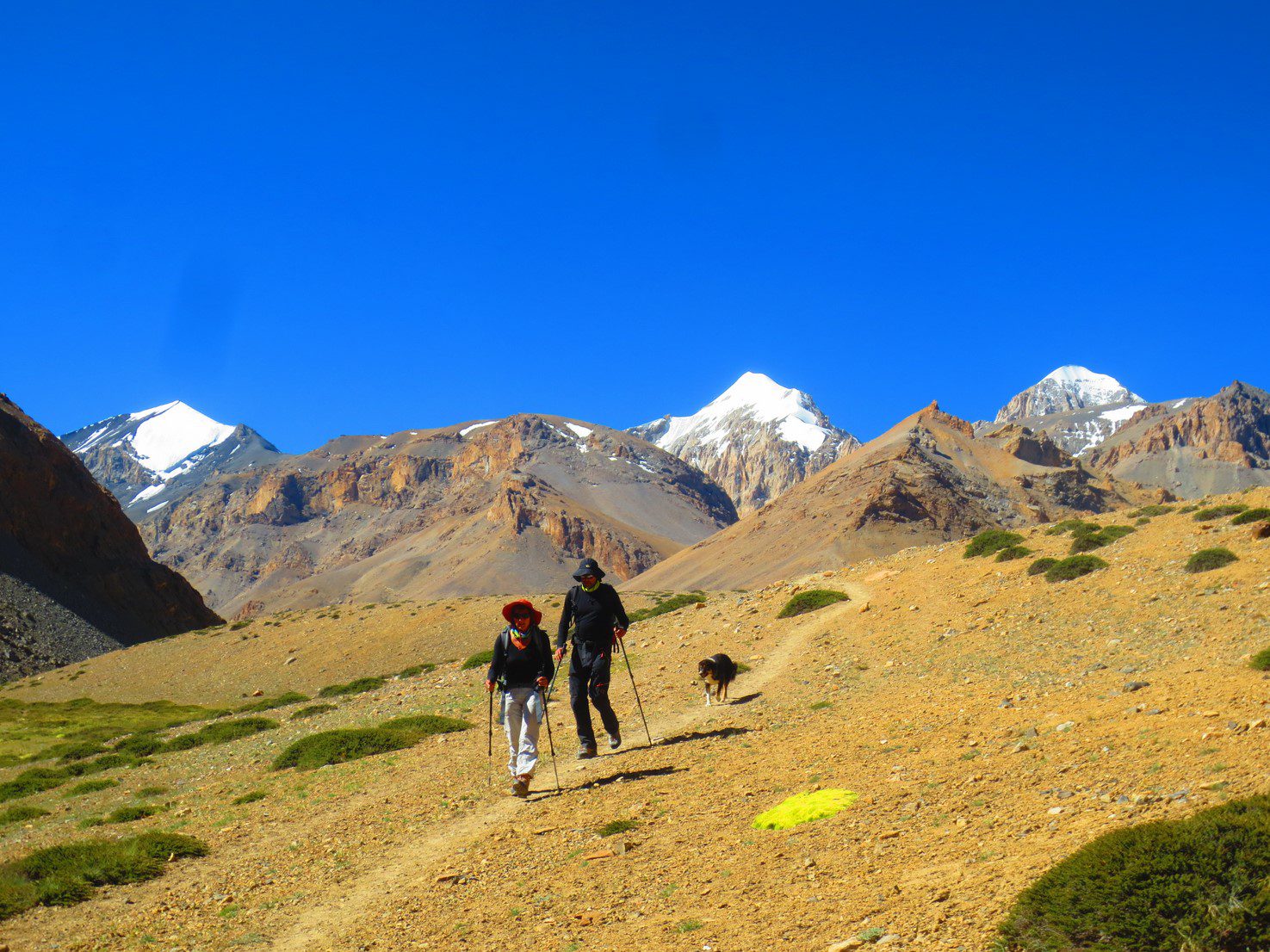
Why Ladakh Still Whispers
Some places shout for attention—neon cities, curated escapes, landscapes ready-made for postcards. But Ladakh doesn’t shout. It never has. It whispers. And in that whisper is a call that, for generations, **has found its way across borders and oceans, into the dreams of Europe’s bohemians, creatives, and seekers**.
What draws them here is not just the promise of mountain air or spiritual retreat. It’s the rare feeling of being met by a land that doesn’t need to sell itself. A place that isn’t performing for you, but quietly inviting you to perform less for the world. To remember who you are beneath the noise.
From the alleyways of Leh to the monasteries balanced on cliffs, from high mountain passes to still, mirrored lakes—Ladakh holds space. Space to think, to breathe, to question. In a world that often demands answers, this land is a sanctuary of beautiful, open-ended questions.
For the European traveler who paints not with brushes but with movement, memory, and meaning, Ladakh continues to offer a kind of refuge that is becoming harder to find. It is one of the last places where silence still means something. Where time feels round, not linear. Where hospitality is still sacred and unhurried.
You don’t “do” Ladakh. You surrender to it. You walk slower. You listen longer. You notice more. And when you finally leave, Ladakh doesn’t stay behind—it travels with you. In the softened way you look at others. In the quieter way you speak to yourself. In the deeper way you inhabit your own life.
This is why Ladakh still whispers. Because it doesn’t need to shout. Those who are meant to hear it, will.
And when they do, they come—not for adventure, not for comfort, but for clarity.
For a journey that asks less of your wallet, and more of your soul.
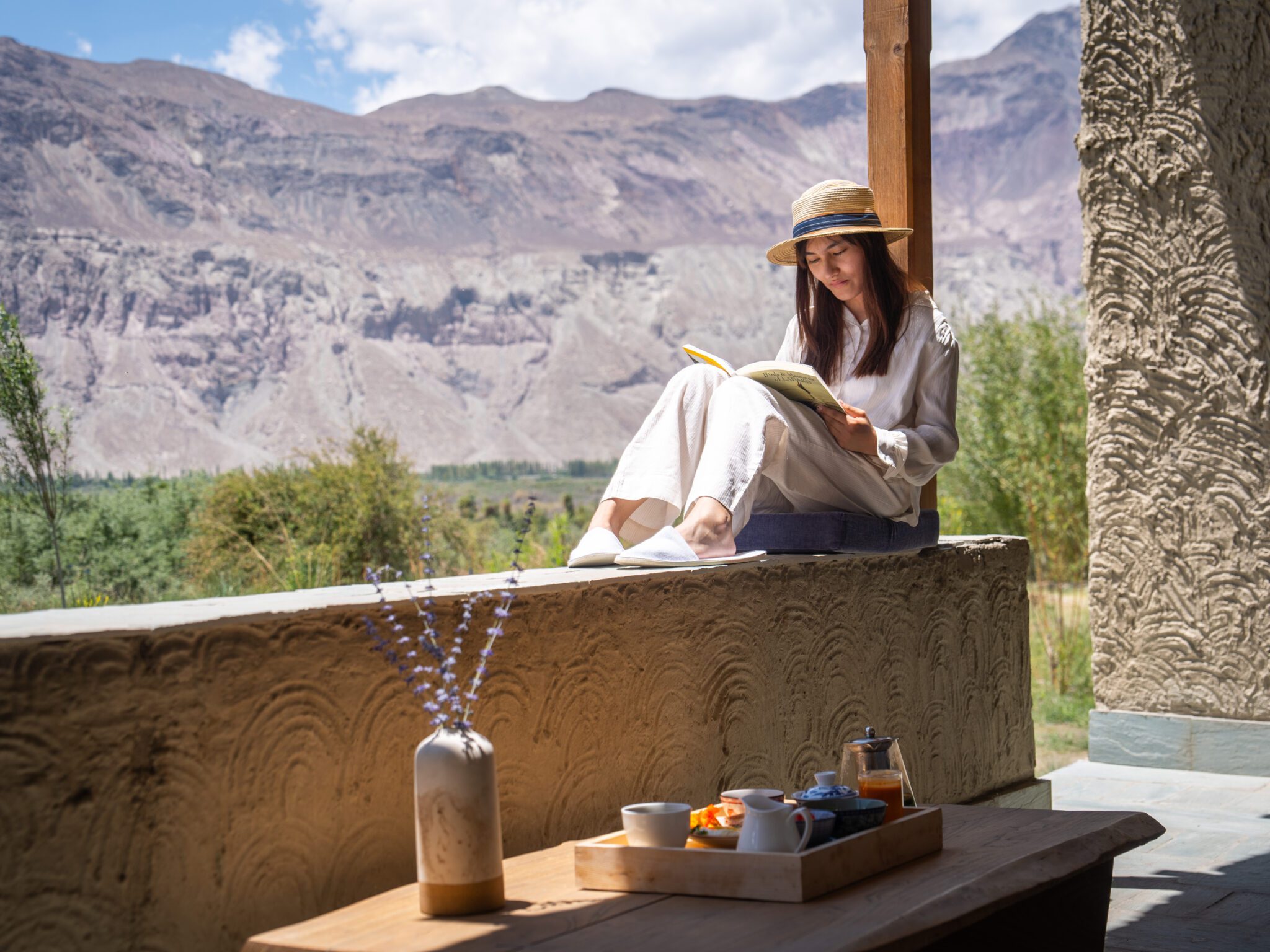
About the Author|Elena Marlowe
Elena Marlowe is an Irish-born writer currently residing in a quiet village near Lake Bled, Slovenia.
Her writing traces the invisible threads between memory, landscape, and the longing for a place to belong.
She is drawn to the forgotten edges of the world—stone paths, wind-worn monasteries, rivers that speak in silence—where stories live just beneath the surface.
Through her columns, she captures what is often missed: the stillness of early light, the texture of a mountain breeze, the soft rituals of distant lives.
A lifelong wanderer with the heart of a poet, Elena writes not to explain the world, but to listen to it.
She believes that some places are not meant to be conquered or consumed, but simply witnessed—and that in those moments of quiet observation, we begin to recognize ourselves.
Her work seeks to remind us that the most profound journeys do not take us far, but deep.
Through Ladakh and other remote corners of the earth, she invites her readers—especially from Europe—to travel not only across geography, but inward, toward stillness, presence, and the enduring human need for meaning.

